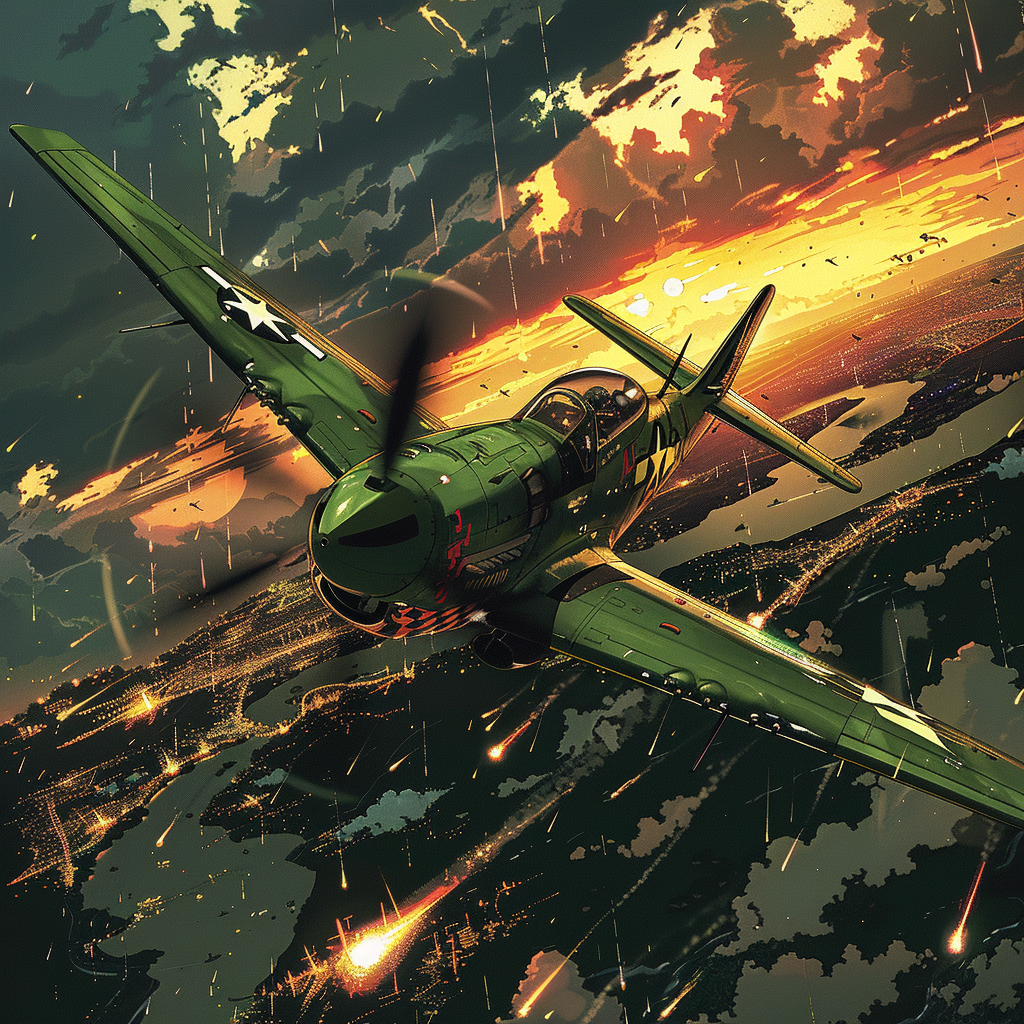### P-51 Mustang: An Iconic WWII Fighter
The P-51 Mustang is one of the most celebrated fighter aircraft of World War II, renowned for its performance, versatility, and significant impact on the war’s outcome. Developed by North American Aviation, the Mustang played a pivotal role in achieving Allied air superiority, particularly in the European Theater.
### Development and Design
The P-51 Mustang was initially designed in response to a British request for a new fighter aircraft. North American Aviation proposed a new design, and the first prototype, designated NA-73X, flew in October 1940. The early models were powered by the Allison V-1710 engine, which limited their performance at high altitudes. However, the aircraft’s potential was fully realized when it was re-engined with the Rolls-Royce Merlin, leading to the creation of the P-51B and P-51C models.
### Key Features
– **Engine**: The combination of the Packard-built Rolls-Royce Merlin engine and an efficient airframe gave the Mustang exceptional speed, range, and high-altitude performance.
– **Range**: With the addition of drop tanks, the P-51 had a combat radius of over 1,300 miles, making it the first Allied fighter capable of escorting bombers deep into Germany and back.
– **Armament**: Typically armed with six .50 caliber M2 Browning machine guns, the Mustang was highly effective in both air-to-air combat and ground-attack missions.
– **Design**: The Mustang featured a laminar-flow wing, which reduced drag and improved performance. Its robust construction and aerodynamic efficiency contributed to its versatility.
### Operational History
– **Escort Missions**: The P-51 Mustang is best known for its role in long-range bomber escort missions. It significantly reduced bomber losses, allowing the Allied strategic bombing campaign to proceed with greater effectiveness.
– **Air Superiority**: The Mustang was instrumental in achieving air superiority over Europe. Its speed and agility made it a formidable opponent against German fighters, and it achieved a high kill ratio.
– **Ground Attack**: In addition to its escort role, the Mustang was effective in ground-attack missions, destroying enemy infrastructure, supply lines, and ground forces.
### Impact on the War
The introduction of the P-51 Mustang marked a turning point in the air war over Europe. It allowed Allied bombers to strike deep into enemy territory with far greater protection, leading to the destruction of critical German industrial and military targets. This air superiority was crucial in weakening Germany’s war effort and contributing to the eventual Allied victory.
### Legacy
The P-51 Mustang’s legacy extends beyond World War II. It continued to serve in various air forces around the world and saw action in the Korean War. Today, it remains a symbol of American ingenuity and military prowess, celebrated in air shows and preserved in museums.
### Specifications (P-51D Model)
– **Engine**: Packard V-1650-7, a licensed-built Rolls-Royce Merlin 66
– **Top Speed**: 437 mph (703 km/h) at 25,000 ft (7,620 m)
– **Range**: 1,650 miles (2,655 km) with external tanks
– **Service Ceiling**: 41,900 ft (12,800 m)
– **Armament**: 6 × .50 caliber (12.7 mm) M2 Browning machine guns, up to 2,000 pounds of bombs or 10 rockets
The P-51 Mustang remains one of the most iconic and revered aircraft in aviation history, symbolizing the innovation and determination that characterized the Allied efforts in World War II.




